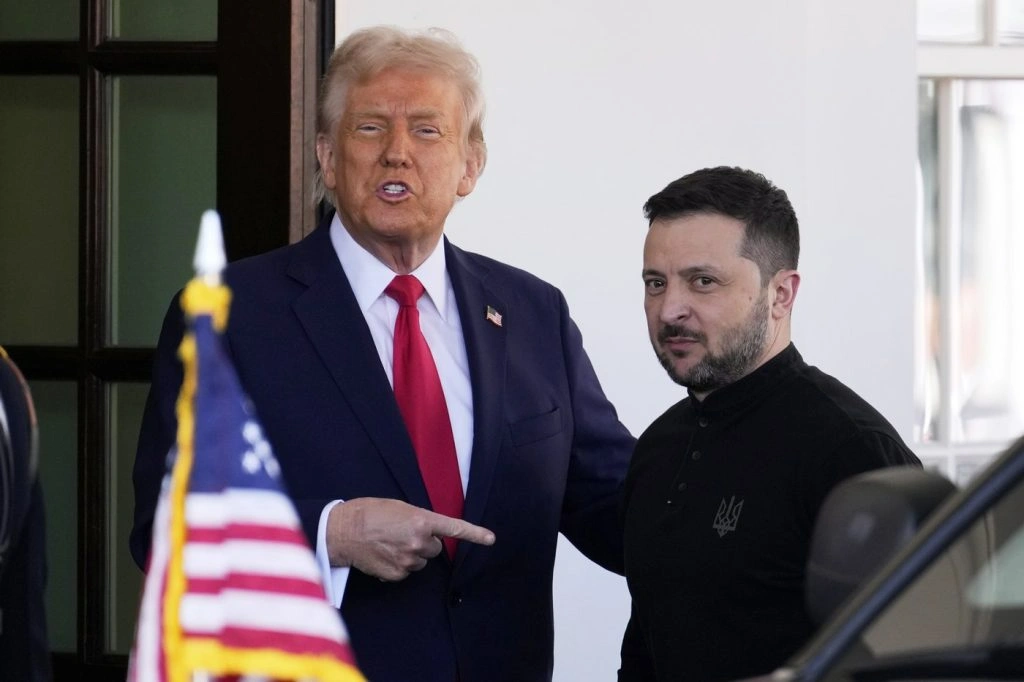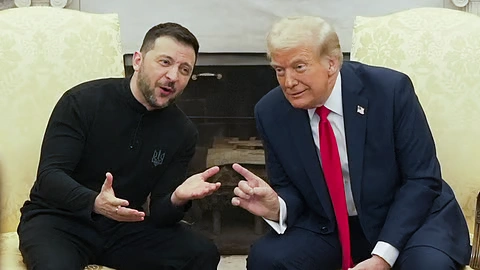European Leaders to Join Ukraine’s Zelenskyy for White House Meeting with Trump
In a striking diplomatic development, European and NATO leaders are set to join Ukrainian President Volodymyr Zelenskyy for his upcoming White House meeting with U.S. President Donald Trump. The announcement came from European Commission President Ursula von der Leyen on Sunday, just a day before the crucial gathering. The decision signals a calculated move by European allies to ensure that the talks remain constructive, balanced, and representative of broader transatlantic unity. It also underscores how delicate the geopolitical situation surrounding Ukraine has become, particularly amid heightened tensions with Russia, ongoing Western sanctions, and Washington’s shifting stance on global trade and security.

This meeting comes against the backdrop of Trump’s earlier encounter with Zelenskyy in February, which was reportedly contentious. By including NATO and EU leaders this time, the West appears intent on presenting a united front to strengthen Ukraine’s position while managing the unpredictable dynamics of Trump’s diplomacy.
Why This Meeting Matters
The upcoming White House talks hold immense significance, not just for Ukraine but for the global balance of power. At the center of it all is Ukraine’s ongoing war against Russian aggression, a conflict that has reshaped security priorities for Europe and NATO.
For Kyiv, direct access to the Oval Office provides an opportunity to secure more tangible commitments—whether in the form of military aid, financial support, or guarantees of long-term cooperation. For Trump, however, the meeting is equally important, albeit for different reasons. The former president has consistently emphasized a transactional approach to foreign policy, often questioning U.S. spending on NATO, aid to allies, and trade concessions. Having Zelenskyy arrive with the backing of European leaders signals that this isn’t merely a bilateral issue—it’s a test of Western unity.
Europe’s Strategic Calculations
The presence of top European leaders like Ursula von der Leyen, along with NATO representatives, adds weight to Ukraine’s case. For Europe, the stakes are high. A destabilized Ukraine not only threatens Eastern Europe but also undermines NATO’s credibility and the EU’s security order.
By accompanying Zelenskyy, European leaders hope to achieve three key objectives:
- Prevent Miscommunication – Trump’s style of off-the-cuff remarks and transactional diplomacy has previously unsettled allies. Having European leaders in the room ensures clarity and minimizes risks of misunderstandings.
- Show Collective Strength – Europe wants to send a message to Moscow that Ukraine is not isolated. A joint appearance in Washington demonstrates unity and shared responsibility.
- Influence U.S. Commitments – By being present, European leaders can directly push for continued U.S. support for Ukraine, particularly in military aid and sanctions enforcement.
The Zelenskyy–Trump Dynamic
President Zelenskyy has had a complex relationship with Trump. While Kyiv values American support, Trump has often treated Ukraine as a bargaining chip in larger geopolitical negotiations—whether with NATO, the EU, or even Russia.
During their last Oval Office encounter in February, reports suggested that Trump was sharply critical, pressing Zelenskyy on corruption and questioning the extent of U.S. aid. That meeting ended on a tense note, leaving Kyiv worried about Trump’s commitment.
This time, however, Zelenskyy will not be alone. Surrounded by European allies, he is better positioned to deflect undue pressure and highlight Ukraine’s progress on governance reforms, transparency, and military resilience.
Trump’s Angle
For President Trump, the meeting is an opportunity to reaffirm U.S. influence on the global stage. Yet, his priorities remain unpredictable. His administration has recently taken a tougher stance on trade, including new tariffs, and has demanded greater burden-sharing from NATO allies.
Trump may seek to leverage Ukraine’s dependence on Western aid to push for concessions—whether financial, trade-related, or political. However, with European leaders at the table, he faces a more unified negotiating bloc than usual. This creates a dynamic where Trump’s trademark “deal-making” style may either lead to breakthroughs or heightened friction.
NATO’s Role
NATO’s involvement in the meeting adds another layer of significance. Since Russia’s full-scale invasion of Ukraine, NATO has been at the forefront of military assistance, intelligence sharing, and regional deterrence. The alliance has expanded its deployments across Eastern Europe and worked closely with Kyiv, even though Ukraine is not a full NATO member.
By joining the White House talks, NATO aims to ensure that military cooperation remains a central focus, and that Ukraine’s security needs are not overshadowed by political or trade disputes.
Russia Watching Closely
It is certain that Moscow will be monitoring the meeting closely. Any signs of disunity among Western allies would embolden the Kremlin, while a strong show of unity could reinforce the effectiveness of sanctions and continued military resistance.
Russia has long sought to exploit divisions within the West, particularly between Washington and Brussels. Therefore, a coordinated appearance by European, NATO, and Ukrainian leaders at the White House is not just symbolic—it is a direct counter to Russian attempts at divide-and-rule.
Challenges Ahead
Despite the united front, significant challenges remain:
- U.S. Domestic Politics: Trump faces internal political pressures, including criticism of his foreign policy approach. Balancing domestic concerns with international commitments could complicate negotiations.
- Economic Costs: Both the U.S. and Europe are grappling with inflation and economic strain. Questions about how long they can sustain costly military and financial aid packages will inevitably arise.
- Long-Term Strategy: Even with strong support, Ukraine still faces a protracted conflict. Western allies must clarify whether their strategy is about helping Kyiv defend itself indefinitely or laying groundwork for eventual negotiations.
What This Means for Ukraine
For Zelenskyy, the meeting is an opportunity to secure concrete commitments. He is expected to emphasize Ukraine’s resilience on the battlefield, its ongoing reforms, and its determination to defend democracy against authoritarian aggression.
At the same time, he will likely stress the importance of sustained Western unity. The presence of European leaders helps bolster his position, making it harder for Trump to dismiss Ukraine’s concerns or reduce aid commitments.
Follow us for more news at Valleynewz.com

